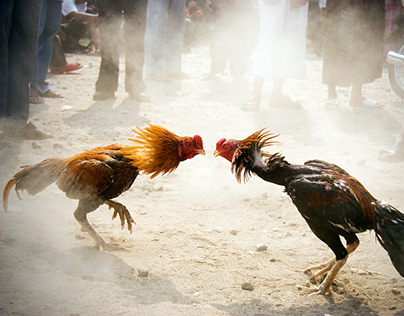Behind the Feathers: Guiding Titans in Cockfighting

Within the world of cutthroat sports, few activities evoke as much passion and tradition as the sport of cockfighting. This ancient practice, with roots deeply ingrained in multiple cultures, sees roosters bred and conditioned for the definitive confrontation in the ring. For many, it is more than a contest of strength and ferocity but a profound demonstration of skill, tactics, and committed breeding. The complex process of rearing these birds often entails a blend of genetics, nutrition, and conditioning techniques that convert common birds into champions.
Behind the scenes of each fight lies a intricate web of commitment and expertise. Trainers and breeders dedicate countless hours into comprehending the distinct traits of each bird, honing their abilities with an eye toward victory. It is a work of love that requires perseverance and a nuanced appreciation of the behavior of animals. As fans gather to observe these fierce displays, the environment crackles with anticipation, underscoring the timeless bond between humans and their feathered counterparts. This piece explores into the realm of cockfighting, exploring the craft of developing champions and the deep cultural significance that surrounds this contentious activity.
A Chronicle of Cockfighting
Cockfighting has ancient roots, with evidence suggesting that it dates back over 6,000 years. The practice is believed to have originated in the region of Southeast Asia, where it was embedded in various cultures as a form of amusement and a display of courage. Ancient civilizations, such as the Hellenistic societies and Roman Empire, adopted cockfighting, adapting it into their own traditions. In these cultures, the sport was not only a pastime but also a way to demonstrate the strength and bravery of both the birds and their handlers.
As cockfighting spread across the world, it took on distinct characteristics depending on the region. RR88 In the Middle Ages, it became particularly popular in England, where it was organized into formal events and attracted considerable attention from all socioeconomic groups. The rise of public arenas for cockfights transformed the activity into a more organized sport, with specific rules emerging to ensure fair play. This era solidified cockfighting’s place in the social fabric, leading to the formation of associations and breeding practices aimed at producing champion roosters.
Despite its long history, cockfighting has faced significant criticism and legal challenges in modern times due to concerns about animal cruelty issues. Many countries have banned the practice, considering it cruel and inhumane. Nevertheless, it remains deeply entrenched in certain cultures, where it is viewed as a traditional sport and a testament to the skills of those who train and handle the birds. These contrasting views on cockfighting continue to shape its evolution and the discussions surrounding its future.
Training Approaches for Champions
To train a winner in cockfighting, rigorous training methods are vital. One common strategy is the use of quickness drills, where birds are encouraged to perform swiftly and accurately. These drills often include placing hurdles in their surroundings to promote quick reflexes and improve their overall dexterity. This bodily conditioning not only builds strength but also enhances balance, ensuring that the birds can effectively maneuver during fights.
Feeding plays a vital role in the development of fighting cocks. A nutritious diet loaded in proteins, vitamins, and minerals greatly contributes to their energy and tenacity. Trainers often experiment with various feeds, including top-notch grains, protein sources like insects, and supplements to ensure the birds are in peak physical condition. Adequate fluid balance is just as important, as it impacts their energy levels and overall performance during matches.
Mental preparation is an additional key aspect of training winning birds. Bird handlers work to acclimatize their fighters to the clatter and visuals of a match environment, gradually exposing them to stimuli that recreate the arena. This habituation process helps minimize stress and worry, allowing the birds to focus on their play. Support and uplifting reinforcement during practice also build self-assurance, crucial for a winning mindset in the intensity of the fight.
Moral Considerations and Regulations
Bird fighting has long been a contentious practice, raising significant ethical concerns regarding animal welfare. Opponents argue that compelling animals to fight for entertainment causes excessive suffering and stress. The physical and psychological toll on the birds is considerable, with injuries and fatalities being common outcomes of such events. Many advocates for animal rights call for the banning of cockfighting, highlighting the moral obligation to treat animals with respect and compassion.
In response to these concerns, various jurisdictions have enacted regulations governing cockfighting. In many areas, cockfighting is prohibited, with severe penalties for those caught participating in or organizing such events. Laws aimed at preventing animal cruelty often extend to the prohibition of raising birds for fighting purposes and the use of fighting implements, such as blades attached to the birds’ anatomy. These laws reflect a growing societal consensus that prioritizes animal welfare over traditional entertainment practices.
Nevertheless, in areas where cockfighting remains legal, there is often a push for regulated environments to ensure the humane treatment of birds. Supporters argue that with appropriate oversight, cockfighting can be conducted in a safer manner. Some advocate for the establishment of standards governing the conditions under which the birds are kept and fought, focusing on minimize harm and ensure the health of the animals involved. This ongoing debate continues to shape the future of cockfighting and its place in society.